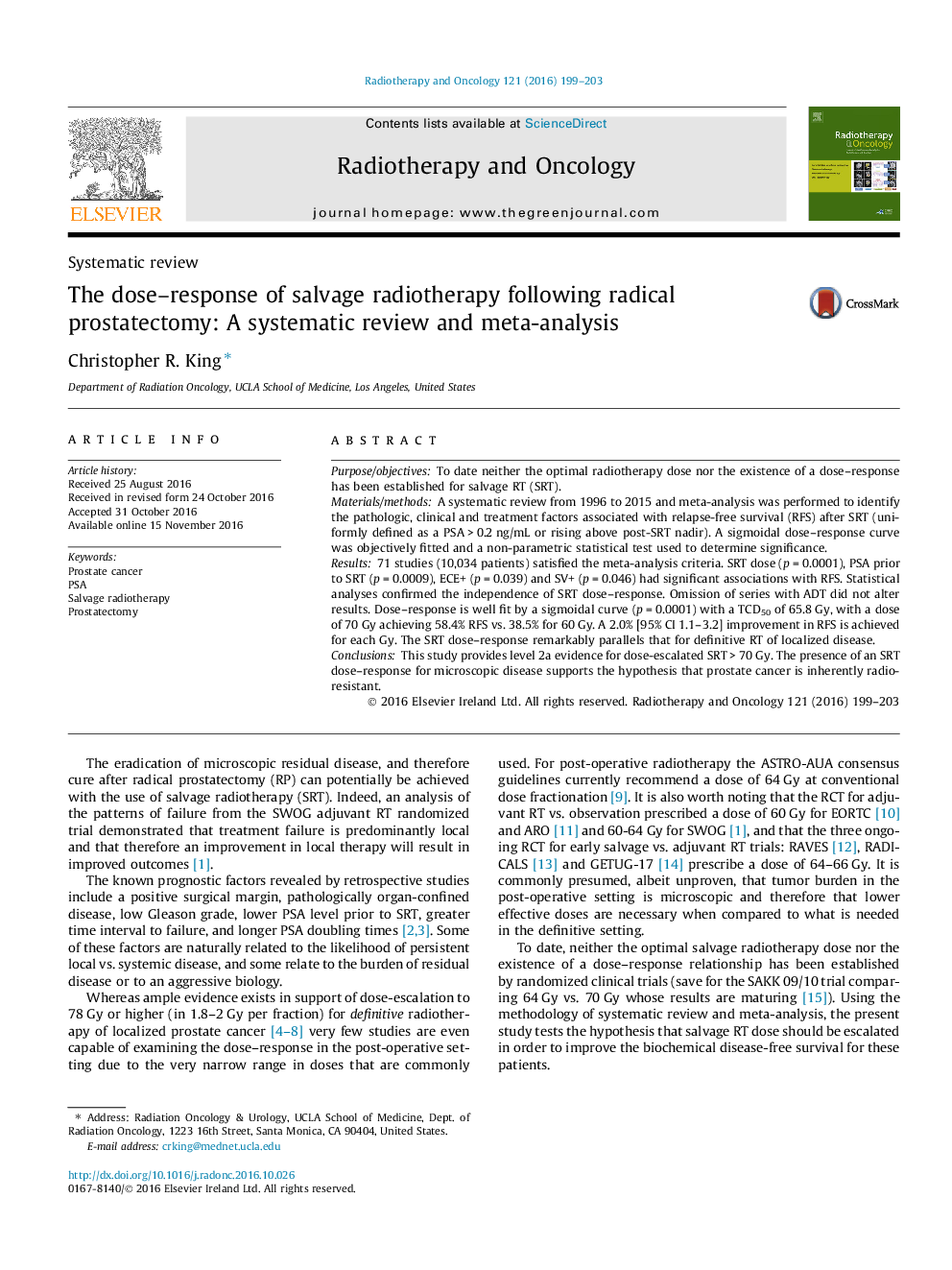| Article ID | Journal | Published Year | Pages | File Type |
|---|---|---|---|---|
| 5529954 | Radiotherapy and Oncology | 2016 | 5 Pages |
Purpose/objectivesTo date neither the optimal radiotherapy dose nor the existence of a dose-response has been established for salvage RT (SRT).Materials/methodsA systematic review from 1996 to 2015 and meta-analysis was performed to identify the pathologic, clinical and treatment factors associated with relapse-free survival (RFS) after SRT (uniformly defined as a PSA > 0.2 ng/mL or rising above post-SRT nadir). A sigmoidal dose-response curve was objectively fitted and a non-parametric statistical test used to determine significance.Results71 studies (10,034 patients) satisfied the meta-analysis criteria. SRT dose (p = 0.0001), PSA prior to SRT (p = 0.0009), ECE+ (p = 0.039) and SV+ (p = 0.046) had significant associations with RFS. Statistical analyses confirmed the independence of SRT dose-response. Omission of series with ADT did not alter results. Dose-response is well fit by a sigmoidal curve (p = 0.0001) with a TCD50 of 65.8 Gy, with a dose of 70 Gy achieving 58.4% RFS vs. 38.5% for 60 Gy. A 2.0% [95% CI 1.1-3.2] improvement in RFS is achieved for each Gy. The SRT dose-response remarkably parallels that for definitive RT of localized disease.ConclusionsThis study provides level 2a evidence for dose-escalated SRT > 70 Gy. The presence of an SRT dose-response for microscopic disease supports the hypothesis that prostate cancer is inherently radio-resistant.
